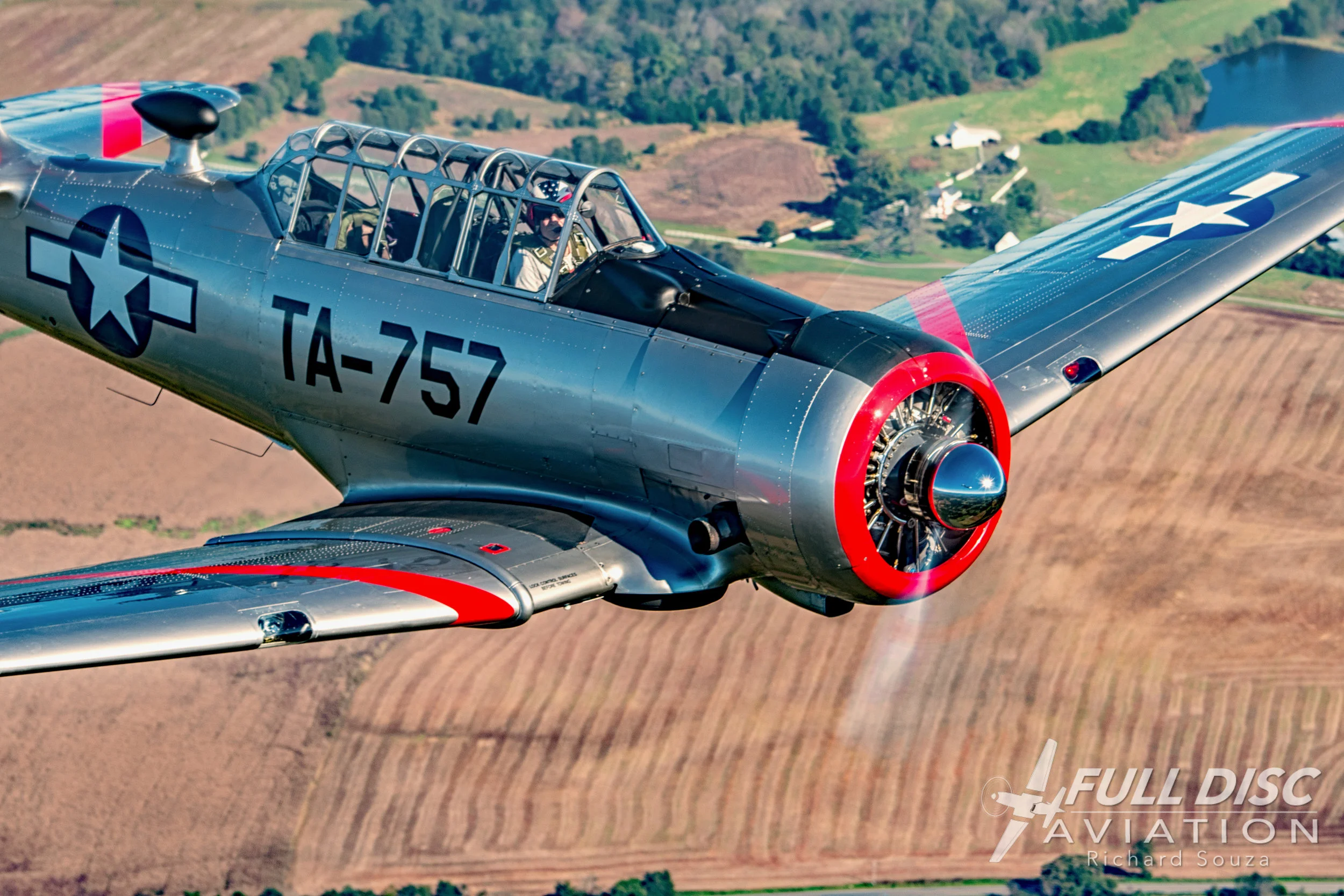T6 Texan
Prose: Nicholas Pascarella
Photography: James Woodard, Nicholas Pascarella, Ryan Kelly, Christian Gross, Ryan Tykosh, Richard Souza
North American Aviation's T-6 Texan is one of the most iconic warbirds of all time. More than 15,000 were built of all variants, with an incredible life span from its first flight in 1935 to the finality of its operational use as trainers by the South African Air Force in 1995. Used heavily as trainers during WWII, this type was nicknamed the "Pilot Maker" due to its unique ability to prepare pilots for many things they would encounter in front line aircraft, such as narrow, retractable landing gear in a tail-dragger configuration and a big radial engine. It had reasonable handling characteristics and challenged the energy management skills of the pilot, but trainer was not its only role.
The T-6 served extensively in Korea and lesser so in Vietnam for the US as a forward air controller's (FAC) platform. The type also saw combat with the armies of Syria, Greece, Israel, France, Portugal, Argentina, Spain, and Pakistan in various wars, used in a counter-insurgency role or as a light-attack aircraft, hitting soft targets of opportunity and even dogfighting with enemy aircraft. This multi-faceted platform was conceived not too long after a rather inauspicious beginning to NAA.
North American Aviation was founded in December 1928 by Clement Melville Keys. The company was originally founded as a holding company that bought and sold interests in airlines and other aviation ventures, but transitioned to a manufacturing company with General Motors buying a controlling stake after the depths of The Great Depression in 1933. With the clouds of war building in Europe, many new factories were opened and the focus became aircraft design and production.
The designs coming off the NAA drawing tables were the blueprints behind some of the most recognizable and breakthrough airframes in history; among them are the T-6 Texan (SNJ to the US Navy and Harvard to the RAF), P-51 Mustang, B-25 Mitchell bomber, F-86 Sabre, X-15 rocket aircraft, Apollo command and service modules, the Saturn V rocket and even the Space Shuttle. Out of all these designs, the most prolific in the current day remains the venerable, classic, timeless T-6 Texan; more than 600 remain in airworthy condition around the world.
Many of these flying Texans of all variants tour the warbird circuit in demonstration teams or as private acts, occasionally modified to represent Japanese aircraft or other American types like a Dauntless or P-47 for movies, television shows or airshow demonstrations. The distinctive snapping sound from the supersonic propeller tips' mini sonic booms in harmony with the roar of the Pratt and Whitney R-1340 nine cylinder 600hp Wasp radial engine is one of the most recognized sounds in all of aviation. In 2018, we celebrate North American Aviation's 90th birthday, and Full Disc Aviation wanted to commemorate the event by getting in the air with one of these legendary aircraft.
Enter Lou Feldvary. Lou owns, maintains and pilots an absolutely gorgeous red and silver 1944 T-6. This particular aircraft served as a trainer and then as an FAC aircraft in the "Mosquito Squadron" during the Korean War, but that wasn't all. It was equipped with machine guns, rocket launchers and bomb racks to soften up North Korean strongholds until F-86's showed up to finish the job. Though he does not have the weapons stations installed, the mounting holes for such equipment still exists as he flies it today.
After Korea, this aircraft was picked up by the Spanish Air Force for use in Spain. It was decommissioned and shipped back to the US in the 60's for private use until Lou picked it up in 2014 from Courtesy Aircraft in Rockford, Illinois. Lou has flown many commercial types, but he credits the T-6 with improving his flight skills to levels "better than they have ever been."
Photo courtesy of James Church
Lou's reasoning behind this echoes the impetus from this aircraft's heydey. "It is old school; all hand flying. No autopilot. No modern day instruments. You pay attention to the aircraft from the time you pull it out of the hangar, 'til the time you bring it to home base or [your] destination." It requires the utmost of care from startup to shutdown, but rewards you accordingly.
When asked what the experience of flying the T-6 means to him, Lou responded, "the ultimate experience, being a pilot's pilot. Speeds for takeoff and landing adjusted for wind speed and crosswind angles must be precisely considered," otherwise, in Lou's words, "bad day will occur." Its sensitivities will bite you if you're not rigorous in your awareness. He's always evaluating what he or other pilots did wrong flying this aircraft, adopting the hard lessons learned to fly safer the next day, but always credits the T-6 with teaching the most important lessons. "Again, the T-6 has made me a better pilot even after [25,000] hours of experience."
Lou connected with us in the air over Culpeper, Virginia for a photoflight in conjunction with 3G Aviation Media. His T-6 sparkled in the bright sunshine of our late fall afternoon. He worked the aircraft in formation with our photoship back and forth from trail to wing, the polished silver propeller flashing the sun's reflections.
The aircraft soaring over the farmland and rolling hills of Virginia was reminiscent of wartime training sorties I'd only seen in grainy black and white photos from the 40's, but only if someone had taken a vivid rainbow of color and saturated the image. It brought to mind the tens of thousands of aviators trained on this exact airframe that went on to become aces and accomplish impossible feats in the face of insurmountable odds in front line aircraft. It was also a sobering reminder that many young men lost their lives in this airframe.
Back on the ground as the sun sank below the trees, Lou was one of the only people still on the Culpeper ramp. Tucked in line with a dozen other T-6's, he had a bucket and a number of towels and was polishing his Texan. The warm tones of sunset played off the silver skin of the wings and fuselage as Lou worked over the last untouched parts of the aircraft with his towels. The legendary lines of the airframe and the unmistakable roar from her engine will continue to hold us in awe for many years to come, and Lou keeps this history vibrantly alive. Most importantly, the lessons from this warbird live on in Lou and everyone else still flying this gem from North American Aviation: the T-6 Texan.


































